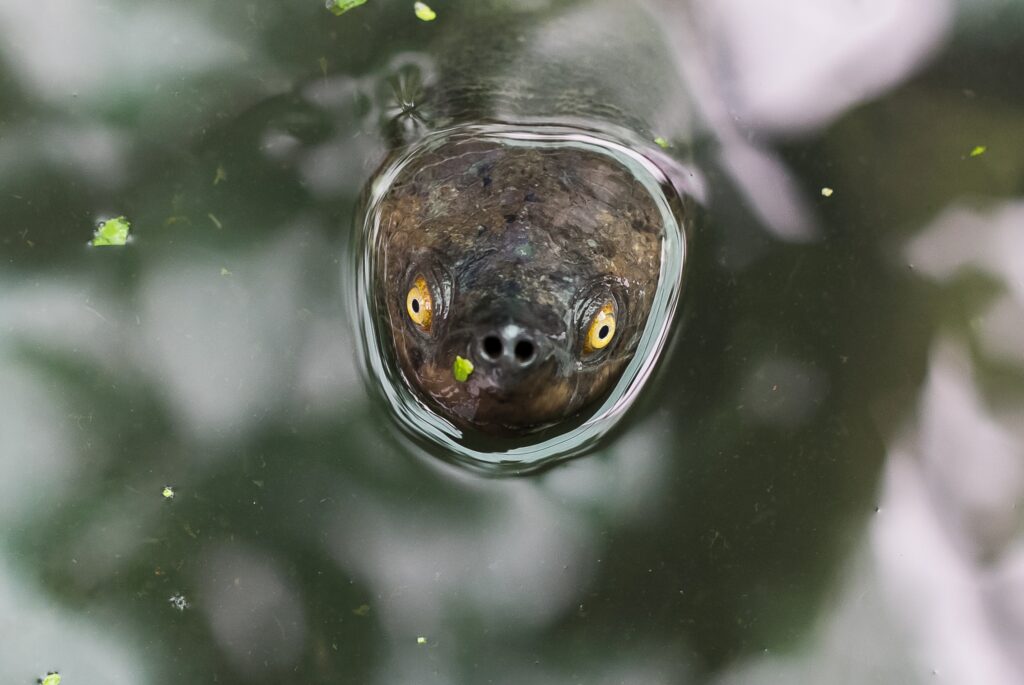
Turtles ‘in horrible shape’ with grim future due to rising sea levels
Expansive phylogenetic tree reveals clues about the animals’ past, future
About 60% of the world’s turtle species are considered threatened or endangered, making them one of the most vulnerable groups of animals on the planet.
A new study in the Proceedings of the National Academy of Sciences reveals new findings about turtles’ evolution so far and the tough prospects they face for survival.
“Turtles are in horrible shape,” said UCLA conservation geneticist Brad Shaffer, senior author of the paper. “There aren’t very many species of turtles and tortoises to begin with, so we don’t have many to lose.”
The number of turtle species — around 360 — is tiny compared with the numbers of species of amphibians (over 8,200), mammals (6,400) and birds (10,000).
Human hunting of turtles for food and traditional medicine is by far the biggest current factor in their threatened status. But according to the paper, rising sea levels driven by climate change will be a much bigger problem in coming years and decades.
The crux of the paper is one of the most complete phylogenetic trees ever created for any major animal group. Phylogenetic trees — branching diagrams that show evolutionary relationships among organisms — include information on how species are interrelated and when they evolved into separate species. Documenting the timing and rate of when they speciated, or evolved into separate species, is crucial because it enables scientists to understand how past events may have influenced the winners and losers in the turtle family tree.
The researchers assembled the turtle tree by collecting and assembling DNA samples from hundreds of living species, and then analyzing the samples to determine similarities and differences among species. Next, they turned to fossil records for turtles to pinpoint when lineages evolved and declined.
One of the paper’s major findings is that about 30 million years ago, the number of turtle species grew significantly, into the hundreds, encompassing the vast majority of species and lineages alive today. The phylogenetic tree helped the researchers determine the likely cause.
“One thing that happened about 30 to 35 million years ago is that the world got cold and dry. There was a big climate change,” Shaffer said.
Water around the poles froze and ice caps expanded, causing sea levels to drop and exposing low-lying land that had previously been part of the submerged continental shelf surrounding most continents. Turtles settled that newly exposed land, and began breeding and differentiating in places like the Brahmaputra delta (in present day Bangladesh and India) and what is now the southeastern United States. Turtles that became isolated in those areas evolved and differentiated, and new species came into existence.
Since then, the rate of speciation has been more stable, despite ice ages and other global changes over the millenia. Now, with sea levels projected to rise due to global warming, much of those habitats are expected to disappear or dramatically shrink within the next hundred years, which would deprive those species of their habitats, Shaffer said.
On top of that, coastal and waterfront areas are among the regions that have been most heavily developed and exploited by humans. As a result, species like the salt marsh specialist, the diamondback terrapin and map turtles — which have speciated in the coastal rivers of the eastern United States that drain into the Gulf of Mexico — have become endangered.
With turtles and other organisms, a major concern is the speed at which the climate is changing. Climate change has accelerated dramatically recently, leaving species little time to adapt — one reason Earth is experiencing the beginning of what is often referred to as the sixth major extinction, said University of Hawaii evolutionary biologist Robert Thomson, lead author of the paper.
“Geologically, it’s likely to look more like a catastrophic meteor strike than one of these things that species slowly adapt to and recover from,” Thomson said.
Foundational science such as the phylogenetic tree published today can help experts better understand how to deal with current problems, even in other scientific fields. The rapid development of COVID-19 vaccines, for example, used phylogenetic insights to identify newly evolved variants that may be more contagious or pathogenic.
For those studying turtles, the phylogenetic tree should help inform conservation efforts in a rapidly changing world.
Top image: An endangered southern river terrapin in southwest Cambodia. | Photo by Thida Leiper/Wildlife Conservation Society




